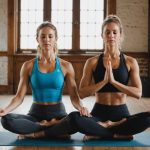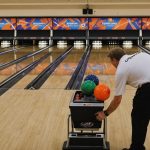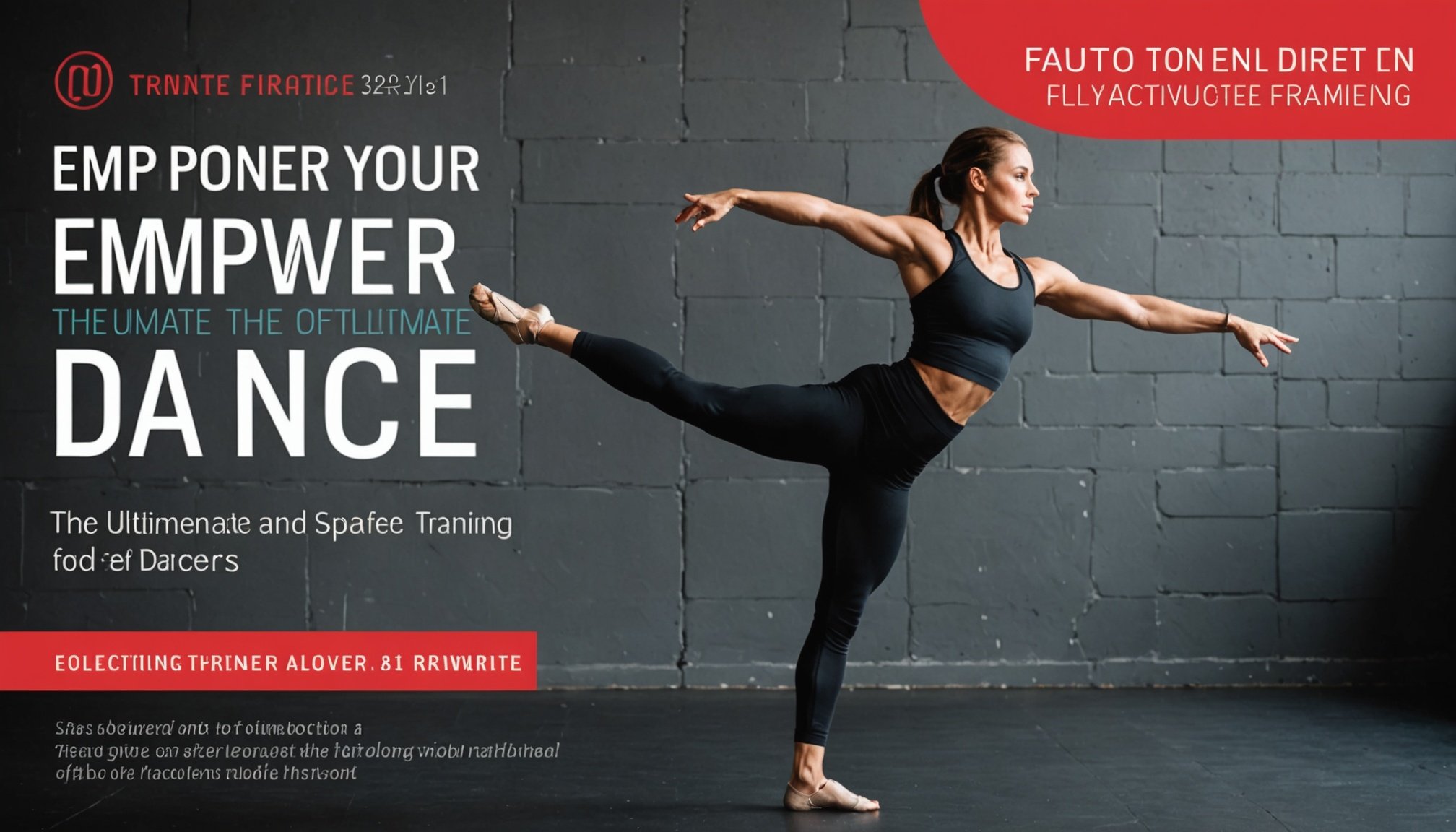Understanding Strength Training for Dancers
Strength training for dancers plays a crucial role in enhancing dance performance. It involves specific conditioning techniques that align with the unique demands of various dance styles. By focusing on building strength, dancers can not only improve their performance quality but also their flexibility and resilience to prevent injuries.
Tailoring strength training to suit different dance styles is essential. Ballet dancers, for instance, may focus more on core strength and stabilization, while contemporary dancers might emphasize dynamic, full-body conditioning. This customization allows dancers to target the muscles and movements most used in their specific style, leading to more effective and efficient practice.
Also to see : Conquer tough terrain: top strategies to enhance endurance and strength for mountain bikers
The benefits of strength training in dance are multifaceted. Improved muscular strength can contribute to better jumps, more fluid movements, and greater control over complex choreography. Additionally, consistent strength exercises can enhance flexibility, providing a broader range of motion which is vital for executing precise dance moves.
To mitigate injury risks, a well-structured conditioning program can be invaluable. Strength training helps in developing muscular imbalances, leading to a more balanced physique that reduces the likelihood of strains or sprains. These benefits are indispensable in supporting a long, healthy dance career.
Also to discover : Maximize your game: harnessing the benefits of plyometric push-ups for rugby athletes
Safe and Effective Strength Training Techniques
Incorporating safe strength training techniques is crucial for dancers to avoid injuries and enhance performance. Adhering to proper guidelines ensures exercises are both effective and sustainable. Prioritise a comprehensive warm-up routine to prepare muscles and joints for the upcoming exertion. Gradually progress in intensity to allow the body to adjust to increased demands.
Core exercises are crucial for dancers, as they develop essential strength and stability. Movements such as planks, crunches, and rotational twists are effective exercises for enhancing a dancer’s core foundation. These exercises target muscles that support key dance maneuvers, fostering better balance and flexibility.
To optimize strength gains, consider varying exercise formats. Employ different combinations of repetitions and sets tailored to individual skill levels. Beginners may benefit from lighter weights with higher reps, while advanced dancers can increase resistance for muscle endurance and power.
Safety tips include maintaining proper form to prevent strain and ensuring rest intervals to aid recovery. Listening to the body and resisting overexertion is vital for long-term strength training success. Through consistent and safe practice, dancers can experience significant improvements in performance and reduce injury risk.
Practical Strength Training Exercises
Integrating strength training exercises for dancers into routine workouts can significantly enhance performance. A well-structured plan should comprise exercises targeting key muscle groups while considering the demands of each dance style.
Lower Body Strength Exercises
Squats and lunges are fundamental in developing the lower body’s power and stability. These exercises improve leg strength, offering a robust foundation for dynamic dance moves like jumps and lifts. Beginners can start with body weight, progressing to weighted variations as they build strength. Such strength fosters greater control and precision during performances.
Upper Body Strength Exercises
For the upper body, exercises like push-ups and rows are invaluable. They cultivate arm and shoulder strength, essential for lifts and extended arm positions in choreography. Incorporating resistance bands can further enhance effectiveness, providing variable resistance and improving muscle endurance.
Core Strength Exercises
Plank variations, such as side planks or reverse planks, bolster core strength, crucial for balance and fluid movements. A strong core enhances posture and alignment, enabling dancers to perform with grace and confidence. Regular inclusion of core workouts can dramatically influence overall dance execution, making these exercises a staple in any dancer’s regimen.
Flexibility Routines for Dancers
Flexibility is a cornerstone of exceptional dance performance, influencing both technique and fluidity. Flexibility exercises for dancers are essential, helping not only to improve movement precision but also to reduce the risk of injury. Incorporating consistent stretching routines into training can dramatically enhance a dancer’s range of motion, essential for executing complex choreography.
Daily routines should be structured to cover key muscle groups, facilitating comprehensive flexibility progression. Simple practices like dynamic stretching pre-performance can help prepare muscles for activity, while static stretching post-exercise aids in cooling down and maintaining muscle elasticity.
When it comes to safe stretching, techniques such as Proprioceptive Neuromuscular Facilitation (PNF) can be highly effective. This involves a cycle of stretching and contracting the target muscle group, maximising flexibility gains. It’s important, however, to maintain correct form and not push beyond your comfort zone to avoid strains.
Ultimately, creating a balanced regimen that integrates flexibility exercises with strength training yields optimal results. By prioritising flexibility, dancers enhance their artistic expression and physical capabilities, setting the stage for a more dynamic and expressive performance.
Injury Prevention Strategies
The significance of injury prevention for dancers cannot be overstated. Common dance injuries, such as sprains, strains, and stress fractures, can stem from overexertion or improper technique. To avert these issues, integrating safe dancing practices into daily routines is critical.
Warm-up and cool-down routines serve as primary defenses against injury. Beginning with light cardio or dynamic stretching primes muscles and joints, enhancing flexibility and reducing strain risk. After performances or training sessions, cool-down exercises—such as gentle stretching—aid in muscle recovery and help maintain elasticity.
Moreover, adopting techniques for listening to one’s body is essential. Being attuned to physical cues like pain or exhaustion ensures timely adjustments in a dancer’s regimen, mitigating potential harm. This mindfulness promotes sustainable practices, supporting long-term health and performance.
To further fortify dancers against injury, exploring cross-training options could prove valuable. Engaging in activities like pilates or swimming can build strength and flexibility without overstressing dance-specific muscles. Overall, these strategies cultivate a proactive approach, fostering an environment where dancers thrive while minimizing injury risks.
Testimonials and Success Stories
In the realm of dance, dancer success stories serve as powerful testaments to the impact of strength training. Many dancers have shared their transformative journeys, illustrating how structured conditioning routines have elevated their performances and sustained their careers. These testimonials on strength training highlight not only physical improvements but also increased confidence and artistic expression.
One such story involves a ballet dancer who, after incorporating a tailored strength training program, saw marked enhancements in her jumps and overall stamina. Her regimen included core and lower body-focused exercises that improved her stability and precision on stage. The dancer noted a significant decrease in injuries, which previously hindered her progress.
Another dancer, specializing in contemporary styles, reported substantial gains in flexibility and strength through targeted conditioning. This dancer’s program comprised diverse exercises, utilizing resistance bands to enhance upper body strength, essential for lifts and dynamic movements.
These inspiring accounts underscore the effectiveness of strength training, motivating others to embark on similar journeys. Engaging with strength conditioning not only fortifies physical abilities but also enriches the emotional connection to dance, fostering a holistic growth path for dancers worldwide.
Downloadable Resources
Exploring downloadable workout plans for dancers can be an invaluable asset for refining skills. These resources offer structured guidance, allowing dancers to integrate strength, flexibility, and injury prevention exercises into their routines.
Video demonstrations are particularly useful, providing visual clarity on proper form and technique. This ensures that dancers execute exercises correctly, maximising benefits while minimising the risk of injury. By following step-by-step instructions, users can enhance their understanding and application of various strength training concepts.
Additional strength training resources can support ongoing education in dance fitness. Whether it’s articles, tutorials, or guides, these tools serve as a foundation for building a comprehensive knowledge of conditioning principles. As dancers progress, they can adapt their routines, incorporating fresh insights and methods.
These downloadable solutions empower dancers by providing them with the flexibility to customise their training according to their individual needs and dance styles. Empowering dancers with accessible resources encourages consistent practice, ultimately leading to improved performance and reduced injury risks. Embracing these tools is a step towards a more informed and resilient dance journey.











